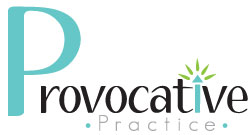Educational policy should begin with values that are formed into a vision of how our schools should be and with principles that explain how our values get enacted. Data and research then inform the action and plans to carry out the policy. It’s time to articulate a new set of commitments to our communities around adopting a values-driven and principles-based vision for education that use powerful, research-informed practices in a transformative approach to ensure high levels of success and sustainability.
This is important because where the leadership doesn’t value who our students are, or the communities from which they come, there will be no systemic, sustainable 21st century education for California’s students. At its most fundamental, our work is about creating environments that recognize, value, and build on global languages, cultures, and lived experiences to create new and sustainable success that ensures California’s diverse students thrive not only in our schools but in the world beyond. That is a key role that Provocative Practice can help schools and districts play--- to enact a values-driven principles-based reform agenda for student success. Such an agenda incorporates five key values:
Culture and language are central to learning, whether it’s in the classroom or the workplace. They play a role not only in communicating and receiving information, but also in shaping the thinking process of groups and individuals. An approach that acknowledges, responds to, and celebrates home cultures and languages offers full, equitable access to education for students from all cultures and language groups, and provides full inclusion in the success of an organization for all its staff and constituents.
Multilingual Education Works. The preface was written by Adama Ouane, Director of the UNESCO Institute for Lifelong Learning. He says:
The challenge that education systems now face is to provide quality education that takes learners’ needs into consideration, whilst at the same time balancing these with contemporary social, cultural and political demands. A multilingual educational approach, in which language is recognised as an integral part of a student’s cultural identity, is an important factor for inclusion, participation and democracy. It promotes respect, tolerance and equality for others. Educating “in and for diversity” teaches us how to live together. It also enables us to develop new ways of learning to do, learning to know and learning to be based on pluralism, mutual understanding and respect, democratic relationships and fundamentally human values. It is for these reasons that it should be recognised as a crucial part of all educational systems.
In part our values integrate a transformative set of commitments regarding language learning. These commitments include:
Additionally, we must also address our intentions around how we operationalize those values and beliefs. We have to be much more intentional and systematic about articulating our understandings about language in order to ensure that our approaches to the education of California’s diverse learners are culturally and linguistically responsive ones:
After all, there’s a body of research going back decades that confirms that when students can achieve proficient bilingualism and biliteracy, not only do students themselves benefit in powerful, life-changing, and multiple ways, but their families and communities benefit as well. And it doesn’t stop there. Those benefits accrue to our society and our world, transforming the way that human beings relate to each other across all those differences that make a difference.
Yet, most US students never have access to these benefits. Meanwhile, 20 out of 25 industrialized countries start teaching world languages in grades K-5, and 21 countries in the European Union require nine years of language study. International business leaders are warning that American graduates may be technically competent but are increasingly culturally deprived and linguistically illiterate compared with graduates from other countries competing for the same jobs.
When our students gain the possibility of expressing their multilingual and multicultural minds, we gain entire worlds. The more languages and cultures we hold in our minds, the more worlds we can share. As the Nobel prize winning scientist Ilya Prigogine once said, the world is richer than it is possible to express in any single language.
Tove Skutnabb-Kangas again provides us with a pointed warning that we would do well to heed:
English is not enough. In knowledge societies uniformity is a handicap. Creativity, innovation, and investment are results of additive teaching and multilingualism.
Through destroying biocultural diversity we are ruining the prerequisites for (human) life on the planet. Creativity and new ideas are the main assets (cultural capital) in a knowledge society and a prerequisite for humankind to adapt to change and to find solutions to the catastrophes of our own making.
Multilingualism enhances creativity; monolingualism and homogenisation kill it.
